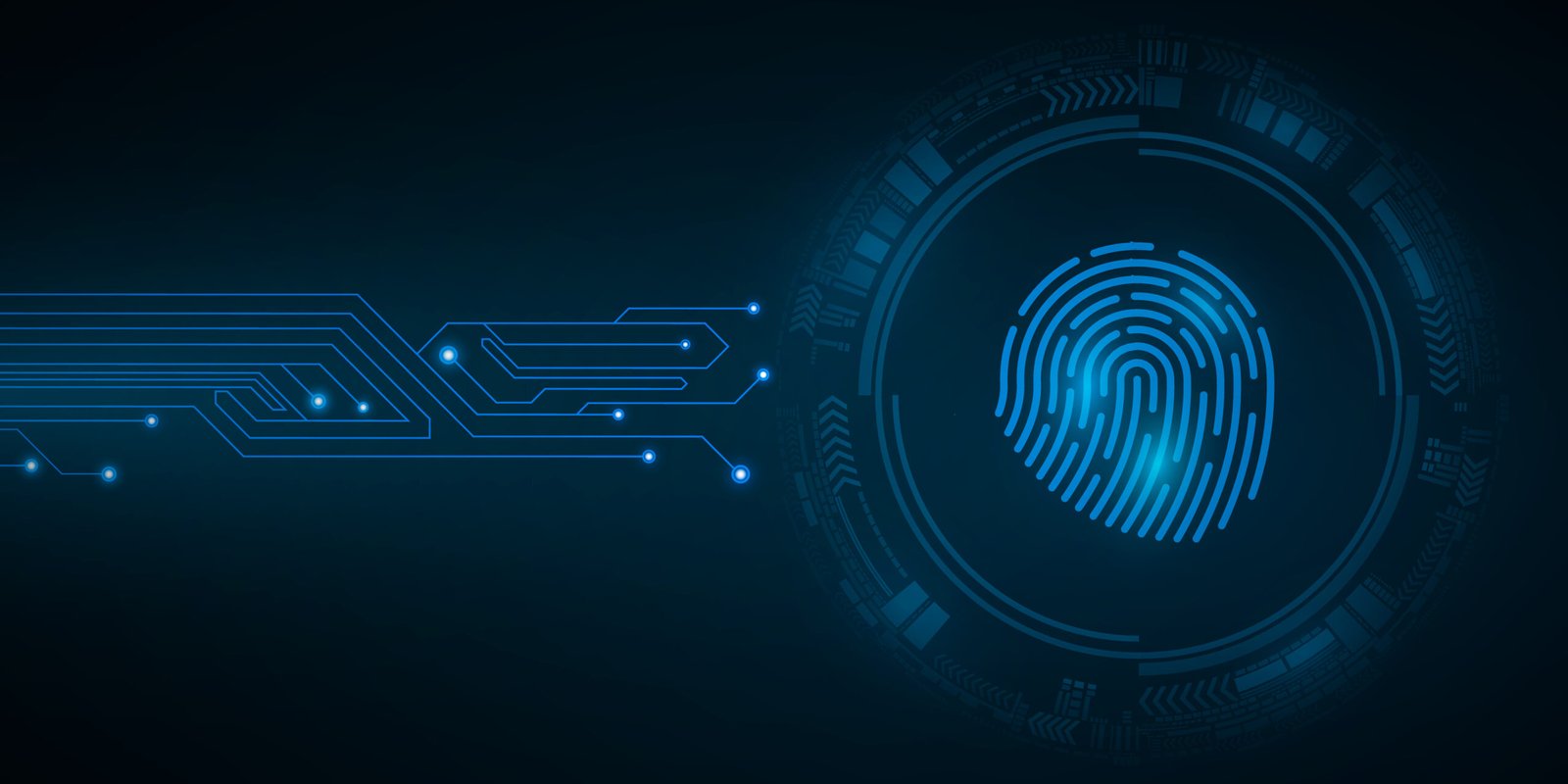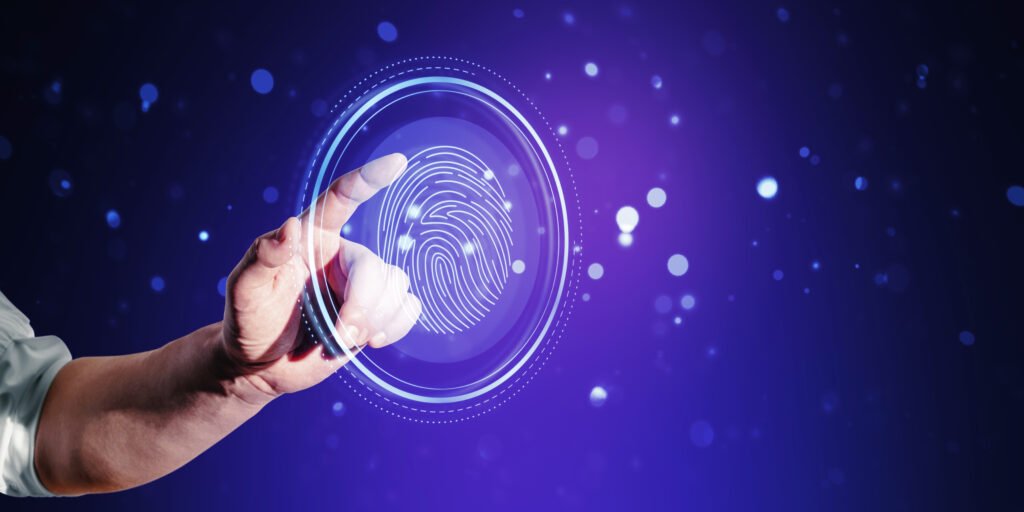New Digital Fingerprints How Cybercriminals Are Caught Today

INTRODUCTION
Cybercrime is no longer an uncommon phenomenon in today’s globalized world—it’s a way of life now. With our online lives growing bigger, so does the ingenuity of the attackers making use of this terrain. And as the cybercriminals become more advanced, so do the tools employed to pursue and bring them to heel.
In this blog, we’ll explore what digital fingerprints are, how they’ve evolved, and how they are being used to catch cybercriminals in 2025. We’ll dive into the tools, technologies, and tactics used by law enforcement, cybersecurity firms, and ethical hackers to stay ahead of the threat.
What Are Digital Fingerprints?
Old vs. New Digital Fingerprints
Legacy digital fingerprints covered minimum logs: device IDs, MAC addresses, browser types, and IP addresses. Cybercriminals, though, have had time to get smart and disguise, spoof, and manipulate these information.
New Digital Fingerprints take it a step further. They encompass behavioral patterns, biometric data, user profiling generated through AI, browser telemetry, mouse movement, and keystroke patterns—developing a distinct, almost unforgeable mark of a user’s digital trail.

Why Cybercriminals Are Harder to Catch Today
With the availability of powerful anonymizing technology such as VPNs, chains of proxies, TOR browsers, and bulletproof hosting services, offenders are able to conceal their location and identity. Ransomware-as-a-service (RaaS) and cryptocurrencies laundering make it even harder to track them.
However, even the most advanced criminal leaves behind New Digital Fingerprints.
Technologies Behind New Digital Fingerprints
AI algorithms now analyze vast amounts of data from various digital environments, learning what normal activity looks like and flagging deviations.
User Behavior Analytics (UBA): AI learns a user’s behavior and flags unusual actions.
Mouse Movement Patterns: How a person navigates a page can be used to track them—even anonymously.
2. Browser Fingerprinting
New browsers leak distinctive settings depending on screen resolution, plugin versions, time zones, and fonts. Panopticlick and AmIUnique illustrate how distinctive browser configurations can be.
3. Device and OS Telemetry
All devices have a distinctive manner of handling tasks.
How Law Enforcement Uses New Digital Fingerprints
1. Linking Incidents Across Time and Space
New digital fingerprints enable investigators to connect cyberattacks that might have been months apart in different areas.
2. Threat Intelligence Feeds
A global database is established through collaboration by security companies and agencies, sharing threat intelligence, suspect fingerprints, and behavioral patterns.
Malware is reverse engineered, digital breadcrumbs tracked, and attack chains reconstructed. Joined with New Digital Fingerprints, even anonymous attackers can be traced.

Notable Case Studies: Catching Cybercriminals Using New Digital Fingerprints
Case 1: The Colonial Pipeline Ransomware
Encrypted tunnels were used by the attackers, but their negotiation behavior, malware construction, and delivery method created fingerprints that were distinct. These fingerprints were compared with past unsolved ransomware incidents.
Case 2: Global Phishing Scam
Thousand of phishing pages looked the same—but the order of script execution, load time, and structure of backend code created a unique signature. That signature traced to a ring of con artists based in three nations.
The Role of Ethical Hackers and White Hat Communities
Ethical hackers and bug bounty hunters play a vital role in detecting and reporting cyber attacks before they can do harm. They employ the same New Digital Fingerprints methods to:
Identify criminal infrastructure
Zero-day exploit analysis
Behavior correlation between malware families
Problems with Using Digital Fingerprints
1. Privacy Issues
Privacy warriors sound the alarm on surveillance-like tracking behavior. Safety vs. privacy is always a balancing act.
2. False Positives
AI is not omniscient. It can mistakenly identify legitimate behavior as malicious if it’s not well trained and contextualized.
3. Criminal Evasion Techniques
Cybercrime gangs evolve. They employ AI to mimic normal user behavior, spoof biometric signals, and flip through virtual spaces.

The Governments’ Role in 2025
Governments worldwide are investing in fourth-generation cyber defense hubs.The EU Agency for Cybersecurity (ENISA) exchanges behavioral signatures between member countries.
How Companies Are Embracing New Digital Fingerprints
1. Zero Trust Architecture
Identity verification is no longer an isolated occurrence. Real-time trust scoring using New Digital Fingerprints is becoming the norm.
2. Fintech Fraud Detection
Payment gateways track typing cadence, interval between keyboard presses, and login patterns to prevent fraud in real time.
3. Endpoint Detection and Response (EDR)
New EDR technology looks at fingerprint data from endpoints for identifying insider threats or stolen credential misuse.
What Individuals Can Do
Use Strong Authentication: MFA with biometric information provides an additional layer.
Keep Software Updated: Fingerprint evasion is typically enabled through vulnerabilities.
Don’t Ignore Small Signs: Typing experience, mouse behaviors, or login notifications modifications might indicate a person is impersonating your fingerprint.
Future of Digital Fingerprinting in Cybersecurity
Until 2030, cybersecurity professionals envision:
Biometric behavior profiling integrated at the OS level
AI to automatically predict attacks prior to occurrence based on fingerprint divergence
Blockchain can hold immutable fingerprint records for transparent auditing
The future is technology, psychology, and forensics.

Conclusion
Cybercrime evolution demands an evolved countermeasure. Old-fashioned techniques of following cybercrime attackers do not do the trick anymore in an age of multilayered, silent, and international attacks. New Digital Fingerprints fill the gap. These evolved, behavior-driven, AI-based detection and tracking technologies give cybersecurity professionals a valuable tool for finding and following attackers—irrespective of if they use cover layers.
From browser telemetry and biometric behavior to artificial intelligence-based threat detection, New Digital Fingerprints are changing the face of protecting the digital world. With law enforcement, business, and ethical hackers using these tools more and more, the distinctions between cyberthieves and protectors shrink. With the capability to capture the most subtle digital motion and cross-correlate it from platform to platform, no criminal action is really anonymous anymore.
But power is audible. Responsibility is the priority in the use of such mechanisms for ethical purposes, ensuring privacy while boosting security. Towards the cyber defense of tomorrow, the convergence of technology, intelligence exchange, and New Digital Fingerprints promises a more secure, resilient internet.
Disclaimer
Suggested information is current trends and knowledge as of 2025 relating to cybersecurity, such as the idea of New Digital Fingerprints. The blog contained herein is not providing professional cybersecurity guidance, legal advice, or substituting consulting with professional experts.
While all possible care is taken to be accurate, threats and technologies in the cybersecurity world change quickly, and readers are asked to make their own research or seek a professional for any particular problems, incidents, or choices. The authors and publishers do not take any responsibility for any actions taken based on this material.
Recent Posts
Categories
- Cyber Security
- Security Operations Center
- Cloud Security
- Case Study
- Technology Trends
Vulnerability Assessment & Penetration Testing (VAPT)
Buy our VAPT services to identify vulnerabilities, simulate real-world attacks, and strengthen your systems against cyber threats effectively.

iso compliance service
Buy our ISO Compliance services to streamline processes, ensure security, meet global standards, and maintain industry certifications with ease.

SOC 2 Compliance Audit
Ensure your business meets security, privacy, and compliance standards with our SOC 2 Compliance Audit services. Protect data, build trust, and stay secure. Buy our services today!

GDPR Compliance Audit Services
Ensure your organization meets GDPR standards with our expert compliance audit services. Protect data, avoid penalties, and enhance privacy practices. Buy our services today to stay secure and compliant!

Subscribe to our Research
Enter your email address to subscribe to Lumiverse Research and receive notifications of new posts by email.
Tell Us Your Opinion
We value your perspective! Share your thoughts, feedback, or questions below. Your opinion matters and helps create a richer, more engaging conversation. Let’s connect and hear what you think about this post!

